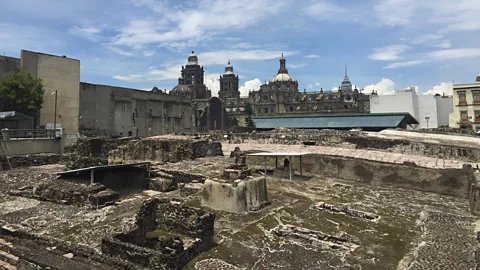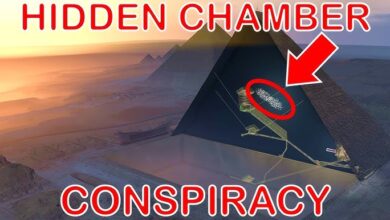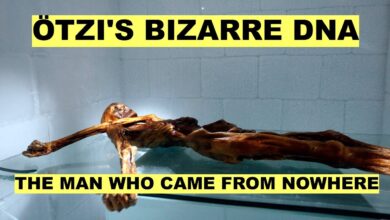What Lies Beneath Mexico City? Mexico City’s Forbidden Underworld

Mexico City, one of the oldest settlements in North America, is a major cultural and historical center. The city is located on the ancient Lake Teo and was once the capital of the mighty Aztec empire. With over 21 million residents, modern Mexico City still holds precious historical monuments, including three UNESCO-recognized sites. As you explore the geological and architectural layers of the city, you will learn about the secrets hidden underground, from modern road layers to ancient structures.
At a depth of 5 to 20 centimeters is the road surface, then there are layers of gravel, crushed stone, sand, and telephone, internet and electrical cables. At a depth of about 1.5 meters, there are mysterious structures, such as the 3,000-year-old catacombs located under Chapultepec Park, containing the remains of four women and one man in a squatting position. Protected by volcanic ash from eruptions thousands of years ago, these tombs belong to an ancient culture from the preclassic period (2500 BC – 250 AD).
Further down, at a depth of about 5 meters, is the Templo Mayor, the sacred center of the Aztec civilization, which was the site of state ceremonies, coronations and sacrifices. This is also the area where workers accidentally found a stone carved with the Aztec goddess Coyolxauhqui in 1978, opening a chain of discoveries of ancient Aztec relics.
Under the modern Spanish cathedral, built from stones from the Aztec temple, there are also several burial areas, including the crypt of the archbishops of Mexico City. This construction symbolizes the Spanish conquest and displacement of Aztec culture, but also the efforts to preserve precious heritage.

In 1985, a major earthquake collapsed an ancient building, allowing archaeologists to uncover buried Aztec relics. In 2006, scientists found a large stone block near the Templo Mayor, opening the entrance to an underground chamber filled with water and rocks. The exploration had to be done with great care to preserve the historical value of every square meter inside.
These discoveries not only shed light on a lost civilization, but also reflect the power of nature and the feats of man throughout the different historical periods of Mexico City.
We start with the **twin pyramids** at the Aztec temple, where priests placed the remains of Aztec emperors on a circular stone platform along with various offerings. Although only 10% of the tomb had been excavated before the COVID-19 pandemic, archaeologists continue to work in the hope of finding the Aztec emperor’s final resting place near the excavation site.
We go further to the **National Ammunition Factory** in Chapultepec Park, where a team from the National Institute of Anthropology and History discovered decomposed bullets and a 15 m² room in 2022. The factory was originally built to reduce Mexico’s dependence on American weapons during World War I, but was later abandoned and covered by natural soil.
**Underneath Mexico City** are underground rivers such as the Río de la Piedad, one of the major rivers that was covered up in the 1950s due to pollution. Covering the rivers was part of a city infrastructure project to address sanitation and transportation issues, but it also marked the end of the historic rivers.
Further down is the **Mexico City metro**, which is up to 36 metres deep and is renowned for its earthquake resistance. During the metro’s construction, many ancient artifacts were found, including parts of pyramids and statues of Aztec gods.
Further down at 50 metres is the **sewer system**, which is over 11,900 kilometres long and serves over 20 million people. To meet the massive drainage needs, the Amis Oriente sewer system, 62.5 km long and 200 meters deep, was built in 2019 to mitigate flooding.
Finally, the **Earthscraper** project, an underground building with an inverted pyramid design at a depth of 300 meters, was proposed to solve Mexico City’s overpopulation problem.








